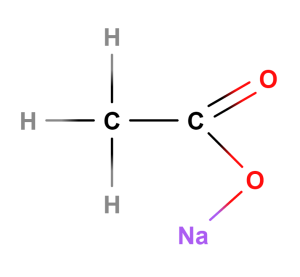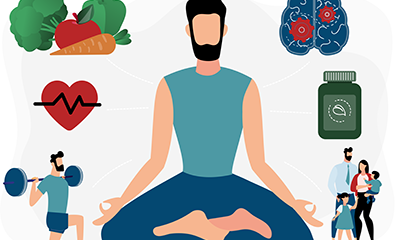HEALTH
5 Genius Hacks to Combat Daytime Sleepiness and Boost Productivity

Discover five cool tricks that will help you fight daytime sleepiness and increase your productivity. Say goodbye to fatigue and hello to increased focus and energy with these effective strategies. Discover the secrets to staying alert and doing more throughout the day.
5 genius tips to combat daytime sleepiness and increase productivity
5 genius tips to combat daytime sleepiness and increase productivity
Image: iStock
Subscribe to notifications
Battling daytime sleepiness can significantly impede productivity and make it difficult to focus on daily tasks. However, with a few nifty tricks, you can combat daytime sleepiness and improve your productivity levels. Don’t let daytime sleepiness get in the way of your productivity. By implementing these 5 great hacks into your routine—prioritizing quality sleep, following an invigorating morning routine, consuming caffeine strategically, incorporating active rest periods, and mastering power naps—you can combat daytime sleepiness, stay alert, and increase productivity for success and efficiency. biggest life. Busy day.
How to prevent daytime sleepiness
In this article, we’ll explore five effective strategies that can help you stay awake, alert, and get more done throughout the day.
1. Prioritize good sleep
One of the most important factors in combating daytime sleepiness is making sure you get enough quality sleep at night. Aim to get seven to eight hours of uninterrupted sleep in a comfortable, supportive sleep environment. Establish a consistent bedtime routine, avoid screens before bed, and create a relaxing atmosphere to promote deep sleep. Also, make sure your bedroom is dark, cool, and quiet. Prioritizing good sleep will provide a solid foundation for maintaining alertness and productivity during the day.
2. Revitalize your morning routine
Start your day with an energizing morning routine to combat daytime sleepiness. Start by exposing yourself to natural light, which helps regulate your circadian rhythm and guides your body to wake up. Do light exercises, such as stretching or speed training, to get your blood flowing and increase your alertness. Consider incorporating energizing activities such as meditation, deep breathing, or listening to upbeat music to revitalize your mind and body. A nutritious breakfast of protein, whole grains, and fruit will provide sustained energy throughout the day, combating mid-morning fatigue.
3. Strategic caffeine consumption
Caffeine can be a great ally in combating daytime sleepiness, but it’s important to take it strategically. Choose a cup of coffee or tea in the morning or early afternoon to reap the alertness-promoting effects of caffeine. Avoid excessive caffeine intake or drinking it before bedtime, as this can affect sleep quality. Be aware of your caffeine sensitivity and adjust your intake accordingly. Consider incorporating other caffeinated alternatives such as green tea or matcha, which provide a smoother energy boost while providing additional health benefits.
4.Activate Breaks and Movement
Combat the midday slump by incorporating active breaks and movement throughout your day. Sitting for prolonged periods can contribute to drowsiness, so make a conscious effort to get up and move every hour. Take short walks, stretch your muscles, or engage in quick bursts of physical activity to increase blood flow and oxygen to the brain, promoting wakefulness. If possible, consider using standing desks or stability balls to add more movement to your workspace. Physical activity not only combats daytime sleepiness but also improves overall well-being and productivity.
5. Power Napping Techniques
When experiencing extreme daytime sleepiness, a power nap can be a game-changer. However, it’s essential to approach napping strategically to avoid grogginess. Aim for a short nap of around 10 to 20 minutes, ideally before 3 p.m., to prevent interfering with nighttime sleep. Find a quiet and comfortable spot, wear an eye mask or earplugs if needed, and set an alarm to ensure you don’t oversleep. Power naps can provide a quick burst of energy, increase alertness, and enhance cognitive function, allowing you to power through the rest of your day with increased productivity.
HEALTH
Understanding Pulsamento | A Rhythmic Journey to Wellness

Introduction to Pulsamento
pulsamento, In a world filled with constant motion and noise, finding moments of stillness and rhythm can be transformative. One such concept gaining attention is it, a rhythmic phenomenon that extends beyond its musical roots to influence various aspects of our lives. This article explores the essence of it, delving into its origins, scientific underpinnings, applications, and practical implications.
Understanding the Concept of Pulsamento
What is Pulsamento?
Pulsamento, derived from the Spanish word “pulsar” meaning to pulse or throb, refers to the rhythmic pulsation or heartbeat inherent in various phenomena. While commonly associated with music, it encompasses a broader spectrum, including biological rhythms, psychological patterns, and cultural expressions.
Origins and Background
The roots of pulsamento can be traced back to ancient civilizations where rhythmic rituals were central to communal activities. From tribal drum circles to synchronized chants, humans have long recognized the power of rhythm to unite, heal, and transcend.
The Science Behind Pulsamento
Biological Significance
At its core, pulsamento mirrors the innate rhythms of life, from the steady cadence of our heartbeat to the cyclic patterns of breathing and sleep. These biological rhythms not only regulate bodily functions but also influence our cognitive processes and emotional well-being.
Psychological Impacts
Studies have shown that exposure to rhythmic stimuli can modulate brain activity, leading to enhanced focus, relaxation, and emotional regulation. Whether through music, dance, or repetitive movements, it engages our senses and fosters a sense of coherence and connection.
Applications of Pulsamento
Health and Wellness
In the realm of health and wellness, pulsamento serves as a therapeutic tool for stress reduction, pain management, and rehabilitation. Techniques such as rhythmic breathing, drumming therapy, and mindfulness practices harness the power of this to promote holistic healing and resilience.
Music and Arts
In music and the arts, it transcends mere tempo and rhythm, shaping the expressive nuances of performance and composition. From the pulsating basslines of electronic music to the rhythmic brushstrokes of abstract painting, artists utilize this to evoke emotion, create tension, and convey meaning.
Technology
Innovations in technology have expanded the boundaries of this, with interactive devices and digital platforms offering new avenues for rhythmic exploration and expression. From wearable gadgets that sync with our heartbeat to immersive experiences that synchronize with ambient rhythms, technology enables us to engage with it in novel ways.
Pulsamento in Everyday Life
Enhancing Productivity
In the realm of productivity and efficiency, pulsamento serves as a catalyst for flow states and peak performance. By aligning tasks with natural rhythms and incorporating rhythmic breaks, individuals can optimize their workflow and sustain focus throughout the day.
Improving Creativity
In the creative process, its fuels inspiration and innovation, providing a rhythmic framework for exploration and experimentation. Whether through improvisational jam sessions or structured exercises, creatives leverage this to unlock new insights, patterns, and possibilities.
Stress Relief
Amidst the hustle and bustle of modern life, it offers a sanctuary of stillness and serenity. Mindful practices such as rhythmic breathing, meditation, and body percussion provide a rhythmic refuge, helping individuals unwind, recharge, and restore balance.
How to Incorporate Pulsamento into Your Life
Mindfulness Practices
Integrating pulsamento into mindfulness practices can deepen awareness, cultivate presence, and enhance overall well-being. Whether through rhythmic breathing exercises, walking meditations, or body scans, individuals can attune to the rhythmic cadence of their inner world and external environment.
Breathing Techniques
Rhythmic breathing techniques such as box breathing, coherent breathing, and resonance breathing synchronize inhalations and exhalations with natural rhythms, promoting relaxation, focus, and emotional equilibrium. By harnessing the power of this, individuals can regulate their autonomic nervous system and alleviate stress-related symptoms.
Creative Expression
Engaging in rhythmic activities such as drumming, dancing, or chanting unlocks the expressive potential of this, fostering spontaneity, connection, and joy. Whether solo or in community settings, creative practices grounded in pulsamento foster a sense of empowerment, belonging, and liberation.
Pulsamento in Cultural Context
Historical Significance
Throughout history, pulsamento has played a pivotal role in cultural rituals, ceremonies, and celebrations. From indigenous traditions to religious observances, rhythmic expressions have served as conduits for spiritual communion, communal bonding, and ancestral reverence.
Modern Interpretations
In contemporary culture, pulsamento continues to evolve and adapt, manifesting in diverse forms and contexts. From global music festivals to virtual dance parties, rhythmic experiences unite individuals across borders, languages, and identities, fostering solidarity, empathy, and collective consciousness.
Challenges and Misconceptions
Overcoming Obstacles
Despite its myriad benefits, incorporating this into daily life may pose challenges for some individuals. Whether due to hectic schedules, cultural barriers, or personal preferences, navigating obstacles requires patience, creativity, and adaptability.
Debunking Myths
Misconceptions surrounding this, such as its exclusivity to musicians or its irrelevance to non-western cultures, hinder its widespread adoption and appreciation. By debunking myths and demystifying its principles, we can promote inclusivity, accessibility, and cultural exchange.
Future Prospects of Pulsamento
Research and Development
As interest in pulsamento continues to grow, interdisciplinary research and innovation hold promise for advancing our understanding and application of rhythmic phenomena. From neuroscientific studies to technological advancements, ongoing exploration of this opens new avenues for healing, learning, and creativity.
Potential Innovations
Emerging technologies such as biofeedback devices, virtual reality experiences, and artificial intelligence algorithms offer exciting possibilities for expanding the scope and impact of this. By harnessing the power of data analytics, immersive simulations, and personalized interventions, future innovations have the potential to revolutionize how we engage with rhythm and wellness.
Conclusion
In conclusion, pulsamento offers a rhythmic journey to wellness, weaving together ancient traditions, scientific insights, and modern applications. Whether as a source of inspiration, a tool for transformation, or a beacon of connection, it invites us to tune into the rhythm of life and dance to the beat of our hearts.
Frequently asked questions
What distinguishes Pulsament from other types of rhythm?
Pulsamento emphasizes the recurrence of various impulses or vibrations and distinguishes it from continuous or irregular rhythms.
How is pulse used in Track Remedy?
Music therapists use the pulse to develop therapeutic interventions that promote calm, reduce tension, and increase emotional well-being.
What challenges are associated with the introduction of predominantly tap-based technologies?
Challenges include mitigating errors caused by resonance, ensuring synchronization in multiaspect systems, and managing inter-individual variability in healing responses.
Are there cultural versions within the interpretation of the Pulsament?
Yes, unique cultures interpret and use pulsation with specific methods, reflecting different perspectives on rhythm and resonance.
What function does the pulse play in the field of biomechanics?
In biomechanics, Pulsament is used to observe human movement patterns, muscle activation sequences and gait assessment and provides information on motor control and coordination.
HEALTH
Unveiling the Wonders of Acetatas | A Comprehensive Exploration

 In the wide range of chemical compounds, Acetatas stand out as fascinating and vital components with a wide range of possible applications. Our goal is to unravel the mysteries surrounding acetates and provide a comprehensive guide that not only educates, but eclipses existing content on the subject.
In the wide range of chemical compounds, Acetatas stand out as fascinating and vital components with a wide range of possible applications. Our goal is to unravel the mysteries surrounding acetates and provide a comprehensive guide that not only educates, but eclipses existing content on the subject.
Deciphering the intricacies of this is like unraveling a captivating puzzle. In this guide, we embark on a journey to explore the depths of acetates and illuminate their meaning, applications and implications. Join us in discovering the secrets and secrets behind acetates and leave no stone unturned in our search for knowledge.
1. What is Acetatas : everything you need to know
In the field of chemical compounds, Acetatas play a fundamental role and have a wide range of applications and implications. Essentially, acetates refer to a group of compounds characterized by the presence of the acetate ion. These compounds span a wide range, from pharmaceuticals to industrial solvents, each with their unique properties and uses.
Interesting paragraph:
At its core, Acetatas embodies versatility and utility and serves as a cornerstone in various industries. From their role in pharmaceutical formulations to their applications in chemical synthesis, acetates exhibit remarkable adaptability, making them indispensable components in numerous processes and products. Understanding the complexities of acetates reveals a world of opportunity where innovation and ingenuity come together to drive progress and prosperity.
2. Clarification of the origins of Acetatas
To truly understand the importance of Acetatas , it is important to trace their origins and evolution over time. Acetates date back to the beginning of chemical research and fascinate scientists and researchers with their unique properties and potential applications. From the groundbreaking experiments of renowned chemists to modern advances in synthesis and analysis, Ace-Tata’s journey is intertwined with the rich wealth of scientific discoveries.
Understanding Acetatas
What is this?
Acetates are esters or salts of acetic acid that are known for their versatility in various industries. These compounds have a remarkable range of applications, from the pharmaceutical industry to the food and beverage sector to the synthesis of polymers.
The role of Acetatas in industry
Pharmaceutical products
In the pharmaceutical world, Ace Tatas play a fundamental role as pharmaceutical middlemen. Due to their unique chemical properties, they are essential for the production of medicines and ensure effectiveness and stability.
Food and Drink
The food and beverage industry harnesses the power of acetate as a flavor enhancer and preservative. Dive into our exploration and discover how these compounds contribute to the tempting taste and longevity of your favorite consumer products.
Polymer synthesis
Polymer synthesis, a fundamental process in various manufacturing areas, benefits significantly from the incorporation of acetates. Their compatibility and reactivity make them invaluable for producing durable and versatile materials.
Types of Acetatas
Ethyl acetate
Among the large number of Acetatas , ethyl acetate stands out as a widely used variant. This section looks at its properties, applications and why it has become a cornerstone in numerous industries.
Properties
Ethyl acetate has a pleasant fruity aroma that distinguishes it from its chemical counterparts. Its low toxicity and high solubility in common solvents contribute to its widespread use.
Applications
From nail polish remover to medicine, the possible uses of ethyl acetate are diverse. Discover the countless ways this connection improves our daily lives.
The art of surpassing rank
Preparation of high-quality content
In the digital age, the battle for online visibility is fierce. To outperform existing articles on Acetatas , our approach goes beyond keyword density and encompasses the art of creating content that not only informs but also captivates.
Keyword integration
Strategically placing keywords related to Acetatas ensures that search engines see the relevance of our content. By seamlessly integrating these keywords into our narrative, we create authority and improve visibility.
Immerse yourself in the applications of Acetatas
State-of-the-art innovations
As the industry evolves, so do the applications of Acetatas . Discover breakthrough innovations that harness the potential of these compounds and pave the way for a future in which Acetatas plays an even more important role.
Case studies
Real-world examples show the impact of Acetatas in various sectors. Our in-depth case studies provide concrete evidence of the importance and effectiveness of these compounds, providing readers with valuable insight.
Frequently asked questions
What are the main applications of acetates in the pharmaceutical industry?
Acetates are typically used in pharmaceutical formulations to improve drug solubility and bioavailability, resulting in more effective treatments for various clinical diseases.
Are acetates harmful to the environment?
While some acetates may also have an impact on the environment, efforts are being made to develop biodegradable options that minimize ecological impact, thereby promoting sustainability and responsible use.
Can acetates be incorporated into the customer’s usual products?
Yes, acetates are found in numerous consumer products, including perfumes, cosmetics, paints and adhesives, where they contribute to scent, texture and functionality.
How are acetates synthesized in business approaches?
Acetates are generally synthesized through esterification reactions in which acetic acid reacts with alcohol in the presence of a catalyst to form the preferred ester compound.
Are there safety concerns associated with handling acetates?
As with any chemical compound, proper handling and storage procedures are important to ensure safety when handling acetates. It is important to follow recommended guidelines and precautions to limit risks.
What role do acetates play in the food business?
Acetates are used as flavor enhancers and perfume components in foods, contributing to the overall sensory pleasure and palatability of various culinary creations.
Conclusion
In Conclusion, our exploration of Acetatas has gone beyond the ordinary. We uncover the complexity of its properties, delve into its cross-industry applications, and demonstrate the strategic approach to surpass existing content.
HEALTH
Senisieta: Unlocking Nature’s Wellness Secret

Welcome to the world of Senisieta, a natural wonder that has been revered for centuries for its remarkable health and beauty benefits. In this article, we will delve deep into the origins, benefits, uses, and safety considerations of it, uncovering its secrets and shedding light on its potential to enhance your well-being.
Benefits of Senisieta
Health Benefits
Senisieta is celebrated for its myriad of health benefits, ranging from immune system support to stress relief and anti-inflammatory properties. Incorporating this into your daily routine can promote overall wellness and vitality.
Beauty Benefits
Beyond its health benefits, Senisieta is also prized for its remarkable effects on beauty and skincare. From nourishing the skin to promoting healthy hair, it offers a natural solution for enhancing your physical appearance.
History and Origins of Senisieta
Senisieta traces its roots back to ancient civilizations, where it was revered as a sacred plant with powerful healing properties. Indigenous cultures across the globe have long utilized this for its medicinal and therapeutic benefits, passing down traditional remedies through generations.
How Senisieta Works on Health
Immune System Boost
One of the key benefits of Senisieta is its ability to boost the immune system, helping the body defend against infections and illnesses. By strengthening the body’s natural defenses, it can enhance resilience and promote overall health.
Stress Relief
In today’s fast-paced world, stress has become a ubiquitous presence in our lives. Senisieta offers a natural remedy for stress relief, helping to calm the mind and promote relaxation. Incorporating this into your daily routine can help you find balance and peace amidst life’s challenges.
Anti-inflammatory Properties
Chronic inflammation is linked to a host of health issues, including heart disease, arthritis, and autoimmune disorders. Senisieta possesses powerful anti-inflammatory properties, which can help reduce inflammation and alleviate symptoms associated with inflammatory conditions.
Senisieta in Beauty and Skincare
Skin Nourishment
Senisieta is a potent source of vitamins, minerals, and antioxidants that nourish and rejuvenate the skin. Whether applied topically or ingested internally, it can help improve skin texture, promote collagen production, and combat signs of aging.
Hair Care
For centuries, Senisieta has been prized for its ability to promote healthy hair growth and prevent hair loss. Rich in essential fatty acids and nutrients, it nourishes the scalp, strengthens hair follicles, and enhances hair vitality.
Different Forms of Senisieta
Senisieta is available in various forms, including oil, capsules, and tea, each offering unique benefits and applications. Whether you prefer topical application or internal consumption, this product suited to your needs.
How to Use Senisieta
Topical Application
For skincare and hair care purposes, Senisieta oil can be applied directly to the skin or scalp, providing nourishment and hydration. Massage a few drops of its oil onto clean skin or add it to your favorite skincare products for added benefits.
Internal Consumption
To reap the health benefits of Senisieta, consider incorporating it into your daily diet. This capsules or tea offer a convenient way to enjoy its medicinal properties, whether you’re looking to boost your immune system or alleviate inflammation.
Senisieta Safety and Side Effects
While Senisieta is generally safe for most people, it’s essential to be aware of potential allergic reactions and interactions with medications. If you have known allergies or are taking medication, consult with a healthcare professional before using it.
Potential Allergic Reactions
Some individuals may experience allergic reactions to Senisieta, particularly if they have allergies to related plants such as ragweed or marigolds. If you develop symptoms such as itching, swelling, or difficulty breathing after using this, discontinue use and seek medical attention.
Interaction with Medications
Senisieta may interact with certain medications, including blood thinners and diabetes medications. If you’re taking prescription medication, speak with your doctor before incorporating this into your regimen to avoid potential complications.
Senisieta in Traditional Medicine
Cultural Significance
In many indigenous cultures, Senisieta holds significant cultural and spiritual importance, often being used in traditional healing ceremonies and rituals. Its healing properties are deeply intertwined with cultural beliefs and practices, reflecting a holistic approach to health and wellness.
Traditional Remedies
Traditional healers have long relied on Senisieta to treat a wide range of ailments, from respiratory infections to digestive issues. By harnessing the power of nature, traditional remedies offer gentle yet effective solutions for promoting health and healing.
Senisieta in Modern Science
In recent years, scientific research has begun to uncover the mechanisms behind it’s healing properties, shedding light on its potential therapeutic applications. Clinical studies have demonstrated its effectiveness in supporting immune function, reducing inflammation, and promoting overall well-being.
Buying and Storing Senisieta
When purchasing its products, it’s essential to choose reputable brands that prioritize quality and purity. Look for organic certifications and third-party testing to ensure that you’re getting a high-quality product free from contaminants.
Proper storage is also key to preserving the potency of this. Store its oil in a cool, dark place away from direct sunlight, and tightly seal capsules or tea bags to prevent oxidation and degradation.
Future Trends and Developments
As interest in natural remedies continues to grow, we can expect to see an increase in the popularity and availability of Senisieta products. From innovative formulations to expanded research initiatives, the future of this looks promising in the quest for optimal health and wellness.
Myths and Misconceptions
Despite its long history of use and numerous scientific studies supporting its benefits, it is not without its myths and misconceptions. From exaggerated claims to misinformation, separating fact from fiction is essential for making informed decisions about it’s use.
Conclusion
In conclusion, Senisieta stands as a testament to the power of nature in promoting health and beauty. From its ancient origins to its modern-day applications, it offers a holistic approach to wellness that resonates with both tradition and science. By incorporating this into your daily routine, you can unlock the secrets of this natural wonder and embark on a journey to enhanced well-being.
Unique FAQs
1.What makes it different from other spiritual practices?
2.How can beginners integrate this into their everyday lives?
3.Is it compatible with different religious beliefs?
4.What scientific evidence supports the benefits of it?
5. How do I find authentic its teachers and resources?
-

 HEALTH2 years ago
HEALTH2 years agoDr. Naval Parikh: Thyroid Disease Signs, Symptoms & Treatment Options
-

 HEALTH2 years ago
HEALTH2 years agoDr. Naval Parikh: Back Injuries, Types, Causes, Symptoms and Treatment
-

 FASHION11 months ago
FASHION11 months agoBest Color Shoes for Men: Making a Style Statement
-

 TECH2 years ago
TECH2 years agoHow to Turn Flashlight On iPhone & Off, 3 Easy Ways
-

 Celebrity2 years ago
Celebrity2 years agoDay 3 of Spring 2016 New York Fashion Week’s most inspiring
-

 GAMES2 years ago
GAMES2 years agoAbout Tekken 3
-

 APPS2 years ago
APPS2 years agoY2mate download videos from YouTube Facebook etc
-

 HEALTH8 months ago
HEALTH8 months agoTop 5 Best Activities For Well being
